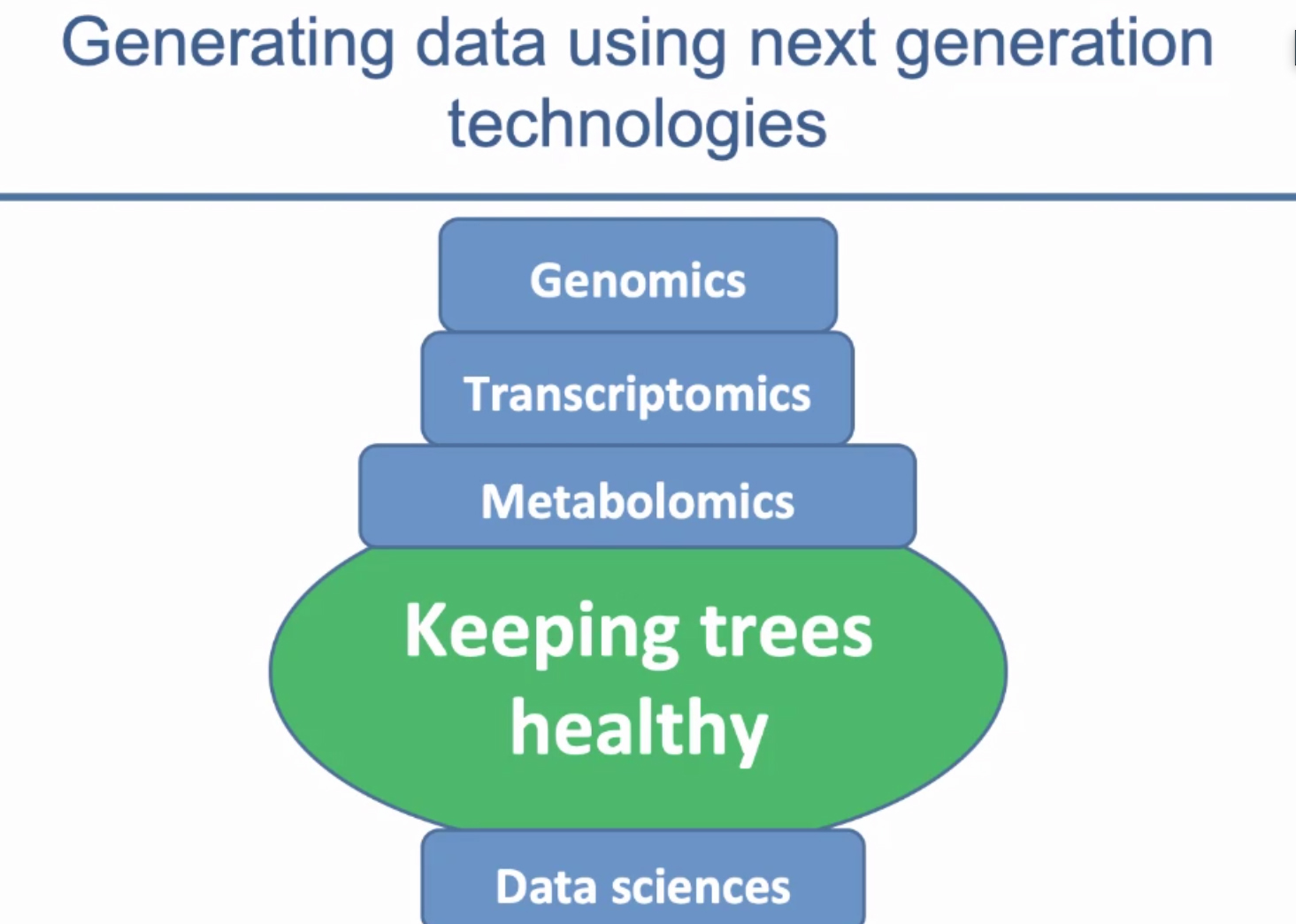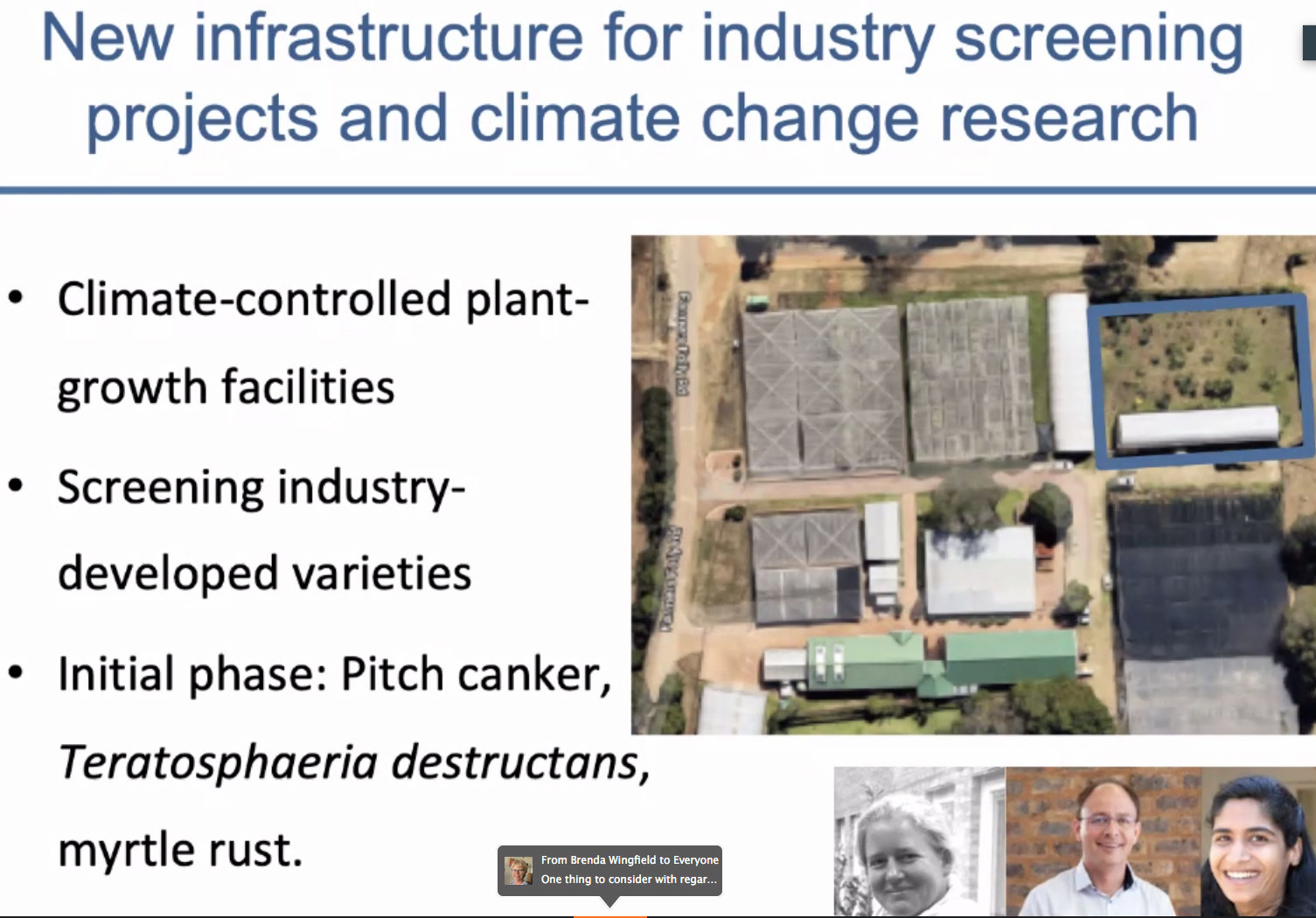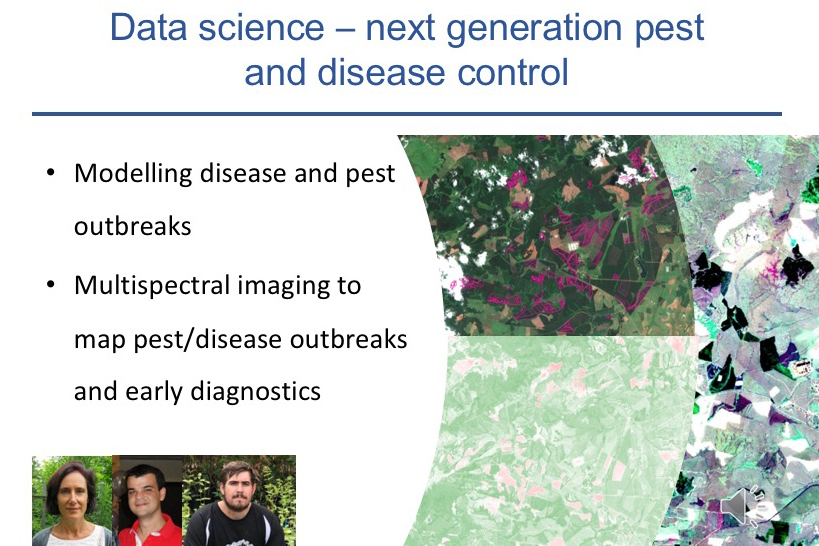Big data, biotechnology and the future of tree health management at FABI 2020-05-19
Harnessing the rapid advances in biotechnology and ‘big-data’ processing will open up new possibilities for future tree health management. The Tree Protection Co-operative Programme (TPCP) and DSI-NRF Centre of Excellence in Plant Health Biotechnology (CPHB) have long used genomics, transcriptomics, metabolomics and data science to guide control strategies in forest pest and disease management. Discussing this topic, panellists and presenters at the 31st Annual meeting of theTree Protection Co-operative Programme (TPCP) and DSI-NRF Centre of Excellence in Plant Health Biotechnology (CPHB) made the point that the “sky is literally the limit”.
FABI’s Dr Almuth Hammerbacher explained that the Institute has, to date, sequenced the genomes of more than 50 fungal, six insect and one nematode species involved in forest health problems. These data provide an invaluable resource towards controlling pathogens and pests by understanding, for example, how (in the case of fungi) they gain resistance to fungicides. Genomics and transcriptomics have, for example, made it possible to design more effective traps for the wood wasp Sirex noctilio, using newly-developed lures and harnessing attractive olfactory and visual cues. Research capturing the power of gene drives will, in the future, allow for the introduction of gene traits into a population of pests altering their fitness, which has important consequence for forest pest and disease management. The CRISPR-cas9 technology is already being used in numerous FABI projects to this end.
The meeting also made note of the fact FABI is collaborating with the University of Pretoria’s Department of Computer Science and the Institute for Commercial Forestry Research (ICFR) to develop forest health prediagnostic tools. The TPCP Disease Clinic’s database was recently digitised to allow the modelling and prediction of pest and disease outbreaks, whilst harnessing multispectral satellite imaging to map these outbreaks. These tools and technologies will be harnessed to develop a national monitoring programme for forest health in South Africa.
Dr Almuth Hammerbacher shared details of the construction of a new climate-controlled growth facility adjacent to the FABI Biocontrol Centre at the University of Pretoria’s Hillcrest Campus. This facility will have three extensive compartments that can be operated independently for climate change studies.
As part of FABI’s international collaborations, the meeting was informed of the establishment of a Satellite Laboratory in Applied Chemical Ecology and research programme which was launched in partnership with Natural Resources Canada (NRC) earlier this year. This initiative will further strengthen an existing long-term relationship between the two Institutes. NRC’s Professor Jeremy Allison, who has an extraordinary appointment in FABI, explained that chemical ecology requires multiple complimentary disciplines. The majority of pest and disease problems in forestry are globally relevant making this partnership a logical and important development that has seen the bi-directional export of capacity building, technology and ideas. The group’s research interests lie at the interface between behavioural chemical ecology and pest management. The primary focus of the work being conducted through this initiative involve the development of an understanding of the chemical ecology of insect pests that damage plantation forests and agricultural tree crops in the southern hemisphere.
View Dr Hammerbacher's presentation by clicking here;
View Prof. Allison's presentation by clicking here.






